Honoring the Past, OffshoreRacing, Foiling & the AC: Loick Peyron Interview
Images: Sander van der Borch/Artemis , Jean Marie Liot, Fred Eagle (Multiplast/Rhum), Catsalingnews (FP), Thierry Martinez (Moth) & Gilles Martin Raget (Energy) & Christophe Launay (BPV) // Loick had a scheduled test for the Flying Phantom at Carnac. After the Long Distance race Outteridge and Peyron went for a ride. But Loick was on a hurry, he got on board the tender from an F18 coming from the beach. After some good smooth flying rides he saluted everybody with a big smile, said few words for a filming crew and went off to back to the Club. So I didn´t got the chance to interview him.
Later I contacted Fred Eagle, that kindly enough made a recorded interview with Loick based on a written one I sent him.
Loick Peyron is the ‘Gran Maitre’ , the Grand Master of the Multihull lodge, may sound naive, but who else has the experience to lead or pass knowledge to next generations? Who has the Round the World Record and also foils like the best of them?
Life is made by experiences and projects, and since the 70s, he has been able to maintain himself in the spotlight in the most diverse sailing ventures.
Peyron honors tradition re building & sailing a Vintage trimaran for next Route du Rhum sans gps, while at the same time foils latest sailing technology on a Moth or the Flying Phantom , or Artemis Big Blue and their 45.
He is a humble and always happy man (look FP image below), a Legend above many and the best ambassador Multihull and Sailing in gral can have. Below some interesting notes on offshore racing, the lack of French teams in the Cup, his personal investment in Energy, concepts on foiling, and why is going old school for next Route do Rhum.
Thanks to Fred Eagle & Loick for taking the time together to record this interview. To follow Loick projects check also Loick Peyron Fb page.
—————-
– CSN: You’ve been in the Multihull World for a while, for those new generations, which are the best projects/achievements you have been involved into through these years ?
Loick Peyron: I should say any kind of project have been interesting through this years. The interesting about the projects I’ve been involved is not the way/order I finish , as you are not obliged to win to have the feeling you that this project was a good one.
In fact I’ve lost quite a lot more races that I won! But I’m quite proud of everything I have done till today, not only on multihull.
So for sure, I had the chance to sail Multis since the 80s, beginning of the 80s, in the 70s in fact , and to date is crazy because I’m still involved at the highest level of the Multihull Arena.
For the new generations , one thing / recommendation that I could share is to have a better look of the future you need to respect the past, to respect the history, to have a wider culture and not only in sailing in fact. It is pretty useful for a sailor to know/learn to do other things than sailing.
So in my case I’m interested to learn any kind of passionate area, like any kind of things that you can drive passion into it.
– With BPV you smashed previous Jules Verne Groupama record. I saw that Tri at La Trinité (Now Spindrift) and stood impressed with it, which were the max speeds you got on the round the globe navigation? And how big was that experience for the sailing crew involved.
LP: The highest speeds we achieved were with the younger crew at the helm, and I think it were 47knots, I should say downhill, on a big wave transition and at Night .. it was possibly a bit to fast I should say , because the best way to finish a race or record attempt is precisely to to finish it!
On the boat (BPV) I was quite impressed too, specially by the work done by the BP team a few years ago, specially Pascal Bidegorry, the previous skipper, and I’m also quite impressed by what Yan Guichard will have to manage to do for the next Rhum race!
On that boat alone, which was absolutely not built for any kind of single handed crossing.
On the experience with the crew, that was not the first time in my case , as I had the chance to be involved in “The Race” organized by my brother in 2000 on a super cat , we were not that much as BP crew, but it is also interesting to alternate / analyze the modes I’ve been doing in round the World voyages.
I have done 4 round the world trips: The first one was alone , the second one fully crewed ,The Race, the third one was double handed on a monohull with Jean Pierre which was on the Barcelona World Race, and the last one fully crewed again in the Trimaran BPV.
So I really loved to be involved in projects featuring all corners of the sailing crew modes.
– Of all your offshore raids, which was the toughest and why?
LP: All the toughest were the single handed ones on Multihulls,
whatever the size of the multihull, specially when I was doing a lot of Atlantic crossing, like the Transat or the Route de Rhum, on the 60 feet Orma trimaran, that was when my hair became white because it is the most stressful way of sailing , as this boat may capsize in a few seconds , and because you need to sleep sometimes!
It is quite less stressful, on a monohull , so on the toughest things to do at sea for sure is the multihull alone is the one which is the worst.
– Volvo Ocean: I talked once to Santi Lange about the Volvo and he told me Multis could do the job as well as the monos, as you might have more control on the way you can trim
and handle power in a more efficient way, he said in monos the crew push hard but you can´t have a good visible or sensitive limit on the power and forces the boat is handling,
You’ve sail both ways in countless offshore regattas, Mono & Multi, it is any difference safety ingredient favoring one or the other? And do you think the Volvo can also switch to Multis in the future too?
LP: Volvo, Yes you could switch to Multis, the problem is Multis are lot more stable upside-down…. which is not he case normally on the monohull, the monohull may capsize but it will go to its normal sailing position due to its superior stability on the weight of the keel.
Multis, they faster and maybe even a little easier to manage. I agree with that and specially the big ones , for instance the record like the one we’ve done in the Jules Vernes or the Race few years ago , were more like a very fast cruising session , and not a war like it is on the monohull , specially on the Volvo.
I really would not like to do the Volvo, even I was quite attracted by the race itself.
But in any case I don´t think it is is a good time to jump to Multihulls for offshore racing around the world, or these boats (multis) should have to be big enough to be quite safe.
AC / Foiling
– You’ve been ‘preaching’ and sailing/racing Multis for a while, How did you feel now with them being the defacto alternative for the AC, and also starting to be accepted as serious racing Classes everywhere specially outside ‘Multihull Land’ (aka France)?
LP: Yes , for sure, the fact the Americas Cup, the defender, chose to jump into the multihull arena , it was a very good thing, but you can’t say that all points or the reasons are positive.
Some of those reasons and some of the consequences of this choice are not positive . One thing it could be a major problem in the future , is that the Americas Cup subsisted in the past because it had some private owners who were sometimes steering themselves , or they got a professional crew, and their passion was sailing as other had passions for cars or collecting art painting or any other activity.
The problem today is that these private owners are not even prepared to sail , or driving the boat , because these boats are really crazy, too fast , and you need a lot of skills to be able to control them , specially because we are flying now.
So I think it is one of the reasons we are losing the private owner market (on the inability of many to acquire such skills) which was in the past the main area or source feeding the Cup.
So that means to survive , the Cup needs to be commercially attractive and have a good commercial plan or ROI to justify the budget you need to be present in the Cup, which is not the case yet.
The real problem and my feeling is that these private owners, you have a lot of them that love sailing, but they are not in the Cup any more cause they are in J-Class replica for instance or they are in big monohulls , so that is the negative side, less teams able to participate.
The positive one is that since half a century the Americas Cup , specially the racing was quite boring for the public, who was not exactly attracted by it, very elegant for sure, the crew work on board was absolutely amazing but only attractive for people with some knowledge in the area, right now we’ve hopefully jump in a new world which is the power of the image , the power of the speed , the videos and the Show!
So the show moved to a more inshore venue , so lots positive things , but definitely , we have changed of planets, we’ve reached another World , and the next cup will be even more crazy with more technology driven than a sailor’s one.
And it might be the extreme in that sense , it is really looking like a Formula 1 story now. a truly mechanical contest, and you have some good drivers, some of them are better than the others, who could make the difference but the gap is now made by the technology than the crew itself.
The good thing now is that the crew is fully involved in the conception (process of designing) the boat , that is why is so interesting too at the same time.
We are not waiting in the garage while the design team is supposed to do a good boat , and now we are full involved in all kind of areas , all what you need to do a fast boat , the sailors are involved.
And the paradox is that for France and french sailors , we had the chance to sail a lot of multihulls , but for many reasons including the budget, is really hard for a French team to be involved in the Cup.
For the reasons that I remarked before , if there rich people who would like to do it but the commercial revenue is not worth/big enough right now. So that is why a French team is hard to organize.
– You are back with Artemis, so no chance to revive the Energy project for now right?
Not involved with Energy anymore , and that was lot or my personal money , that is still in the Energy package, and that is why I chose to sign again with Artemis because they asked me to do another campaign with them.
I spend an year an a half with these guys and I had a very big feeling that Artemis will be one of the biggest and efficient teams in the future, that is not because I’m in! … but I hope that is a little part of it.! laughs.
– Energy in the AC45 circuit had great performance, I labeled you guys as the Dark Horses, and you delivered as one of the best teams of the fleet.
How was that experience for you and why is so hard in France to get sponsorship for an AC team while Sailing is rather such a big sport there?
LP: It was a really nice experience, very risky in fact , my brother and I , we put all we had in our pockets and that was not enough for sure, to try to create a French team , honestly we’ve taken lots of financial risks from our side, , and were not payed and … whatever… But that is the way the French goes, first always for passion.
Although Energy was an interesting experience plus a really good step, to get still involved in the Cup (as I was with Alinghi few years before), I’m still involved , and thanks what we’ve done with Energy then I had the chance to stay in touch with this small Village, because any kind of high level sport it is really a small village, not really easy to get in .
But by the time you are appreciated or renown then you have the chance to get inside that elite World.
– With Artemis you got into the foiling mode, and you even went for Moth sailing.
How was that learning process from the Flying 45, Moth to Big Blue? It looked like a little more time needed and the performance curve would have been quite good to compete more evenly against Luna Rossa.
LP: In fact it was pretty useful (Artemis Flying AC45), because we were the last team to decide to foil for a lot of reasons, and we had to learn very quickly, we’ve learned a lot, but a bit too late, the flights in the 45 we did were pretty efficient, because we just had to copy and try to do better than the other teams.
Big Blue was already drawn so it was not easy to optimize the first choice, that was not exactly
the best one.
On the Moth I had the chance to have good teachers, for sure the best in the world like Nathan Outteridge, Ian Jensen (goobs) and Adam May.
I’ve Also done the Worlds in Hawaii few months ago.
It was not easy , and couldn´t show my real level ! (Fred: and your stitches in your knees) It was a really nice experience though, I’m not doing this year worlds but maybe next year in Australia.
Luna Rossa, no , we really were very far from Luna Rossa, and from the others, for lots of reasons & details, even the Kiwis thought they were far ahead of everybody which was the case at the beginning , but the story showed that a lot of small details were making huge differences at the end.
– I saw you at Carnac on the FP and you were too relaxed and in control , you grabbed the pace just like that.We might say you have by now some advanced foiling skills.
How do you feel about flying and racing in smaller beachcats like the FP or the Nacra 20?
– LP: Yes you saw me, it was absolutely cool, it was really easy to fly , you have the proof of that after we were sailing with the little girl RSBC, do it quite well.
So the boat is really stable , and we already know how to make a stable foiling , that is not a big deal , you can do nowadays a big plane that that is stable , any kind of vessel, can be made stable but is a lot slower. But the Phantom maybe a very interesting device to use and we are still waiting for ours at Artemis.
Foiling skills: Nor really, well I should say yeah, I spent quite a lot of hours on Big Blue 72
and the 45 but I still need to improve lots of things, so yes
I’ve been foiling a lot which is the most important thing, to try to learn something new every day.
Small Cats: These boats are not exactly , at least to date, the best racing ones , because a race is not a dragster race, not a straight line only based on speed , the race is interesting when you need some other skills , maneuvers, etc and foiling in small cats is not yet there, we’ll see next months how things develop.
– How about foiling in the A-Class? You are missing to participate in the Euros/Worlds in that Class
LP: No I didn´t tried yet, but it will be the case in a few weeks in Alamenda , and then I will have the chance to test it, but I’m not sure it will be that interesting in fact, for the same reason, because the A Class is yet quite unstable , and if you make it stable is quite slow so , and you are alone, and that is rather a Moth, which is really perfect for single handed foiling.
So you are not learning many things on the foiling Aclass for the Cup.
– Final thought on foiling, We might see foiling round the worlds attempts in the future?
Foiling around the world: For sure, in fact we’ve been using foils for many many years, nobody know which is going to be the future, and any kind of record are going to be beaten , so yes, we will
see foiling round the worlds records in the future.
Route du Rhum
– With all this new technology you have chosen an old school attempt for the next Route de Rhum regatta. Why you decided to go that way? (And how big is the handicap if worth to analyze)
LP: Oh yeah, vintage, because I want to feel again the feeling I had in my first transatlantic in 79, 80 when the satellite , gps system was only on the paper, not existing , I want to feel again this sort of freedom, I don´t miss it but , it is another way do it, that is the first reason, and the second one is I want to give tribute to Mike Birch for sure, Mike was my Jedi Master, he was the first to won the Rhum race, on the boat I will do the next one.
That I want to do it in a vintage style, with no further systems, no modern technology, just a sextant, no gps, a tribute to all these pioneers like Walter Green, who is the designer and builder of the boat I have
(sister ship of Olympus) and that is a tribute to the last 40 years.
Cause if we are foiling now, and if anyone can buy a boat and cross the Atlantic too, is thanks to (I ‘m part of those pioneers too) those crazy guys and not so crazy ones, who took risk to build boats, to sail them in the last 40 years, or in the last 400 hundreds years also, so that its a tribute to that maritime Era, and again cause I like the extreme I like to be involved in a vintage style while I’m also foiling in the bay with another boat.
– Which are the next steps at Artemis, you guys got back to foil the 45 at the bay. And Do you like the chance to get smaller boats? (even the non 45s put on a show also.)
Next steps Artemis, we are slung again the AC45 foiler , not every day as we are having some scheduled camps. On the smaller boats
– Which are your next projects besides the Cup & Route? After what I saw at Carnac, is there any chance to get in the Nacra 17 Olympic campaign too?? 😉
Already big projects with Rhum and Artemis, Nacra 17, not a chance, too many very good French guys already and I’m really busy, even if the Cup is in 3 years time it is a long road where you need to keep the pace, not too fast , not too slow… and for the adventure side…
I might have another one but it is a secret !!!
——————
.ENDS.
Copyright Catsailingnews.com
 |
| Martin Raget |
 |
| Christophe Launay |











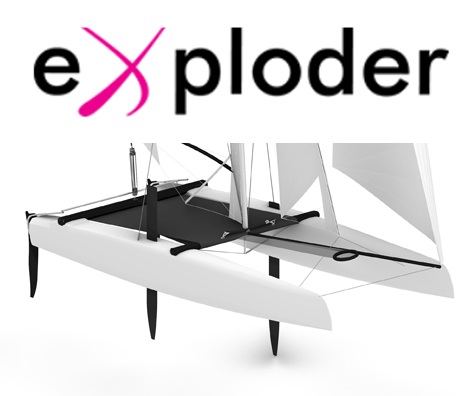
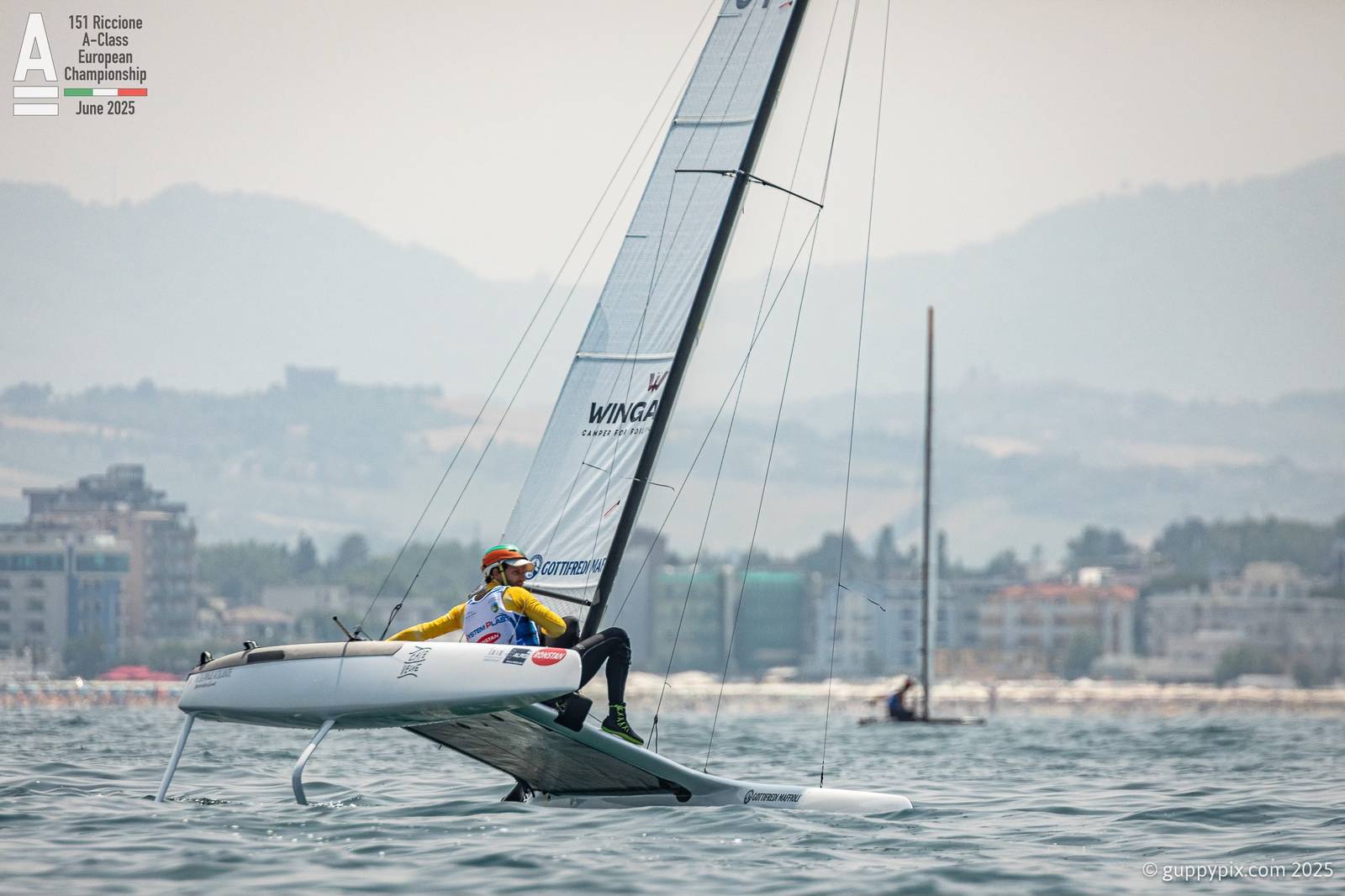
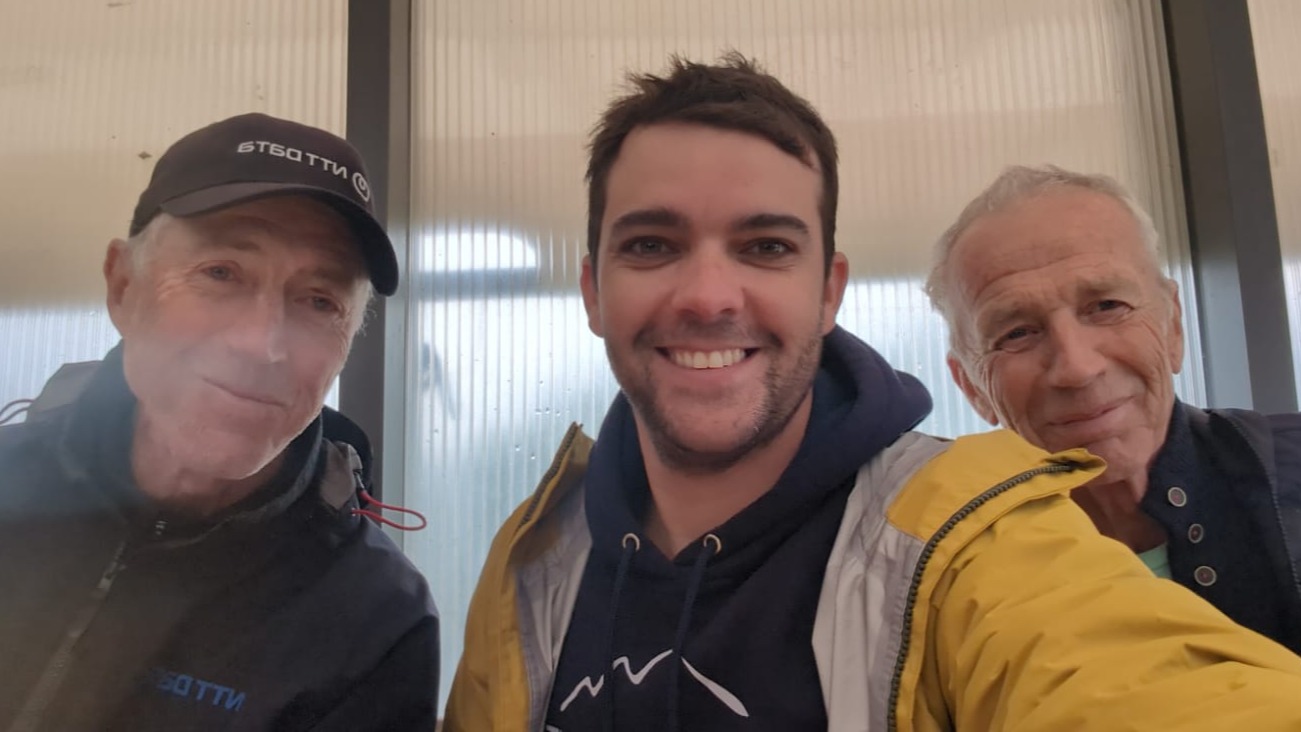
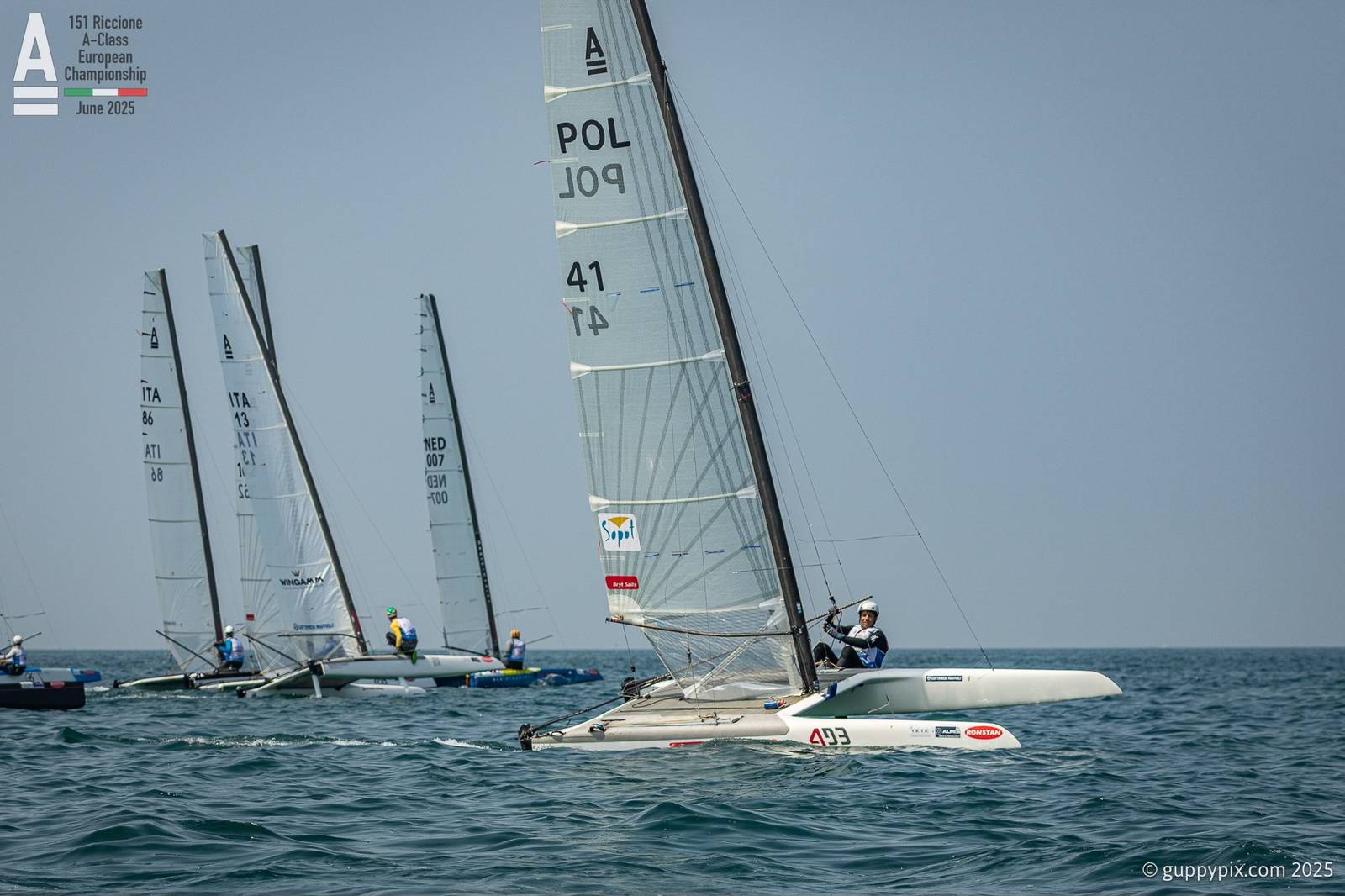
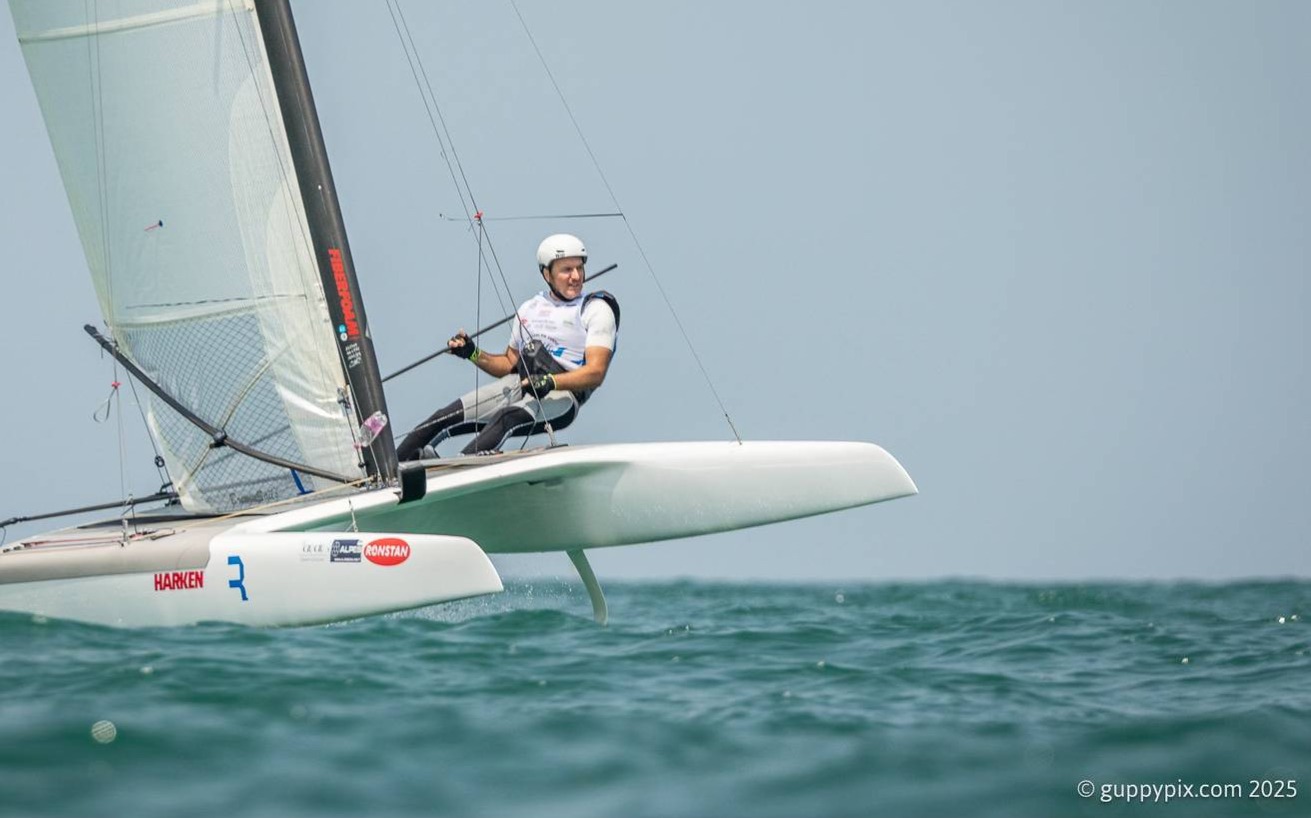
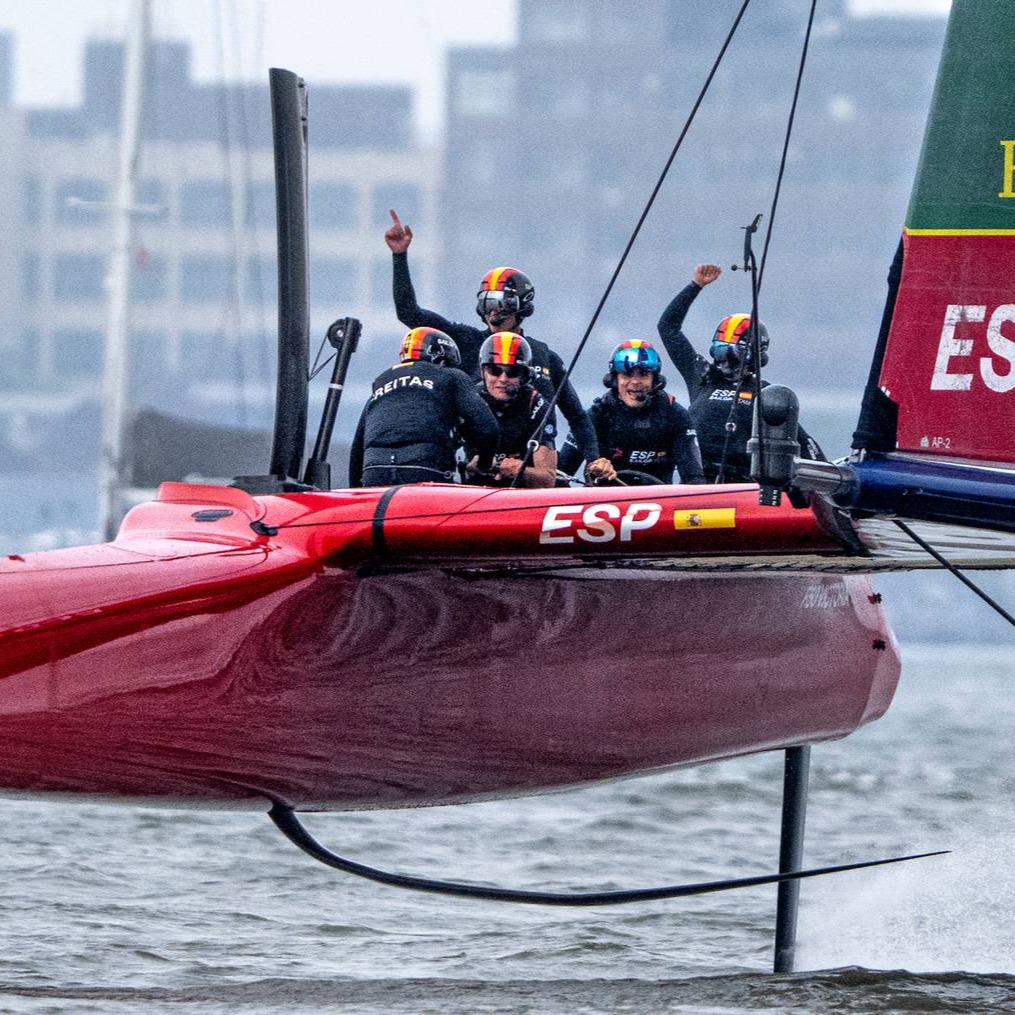
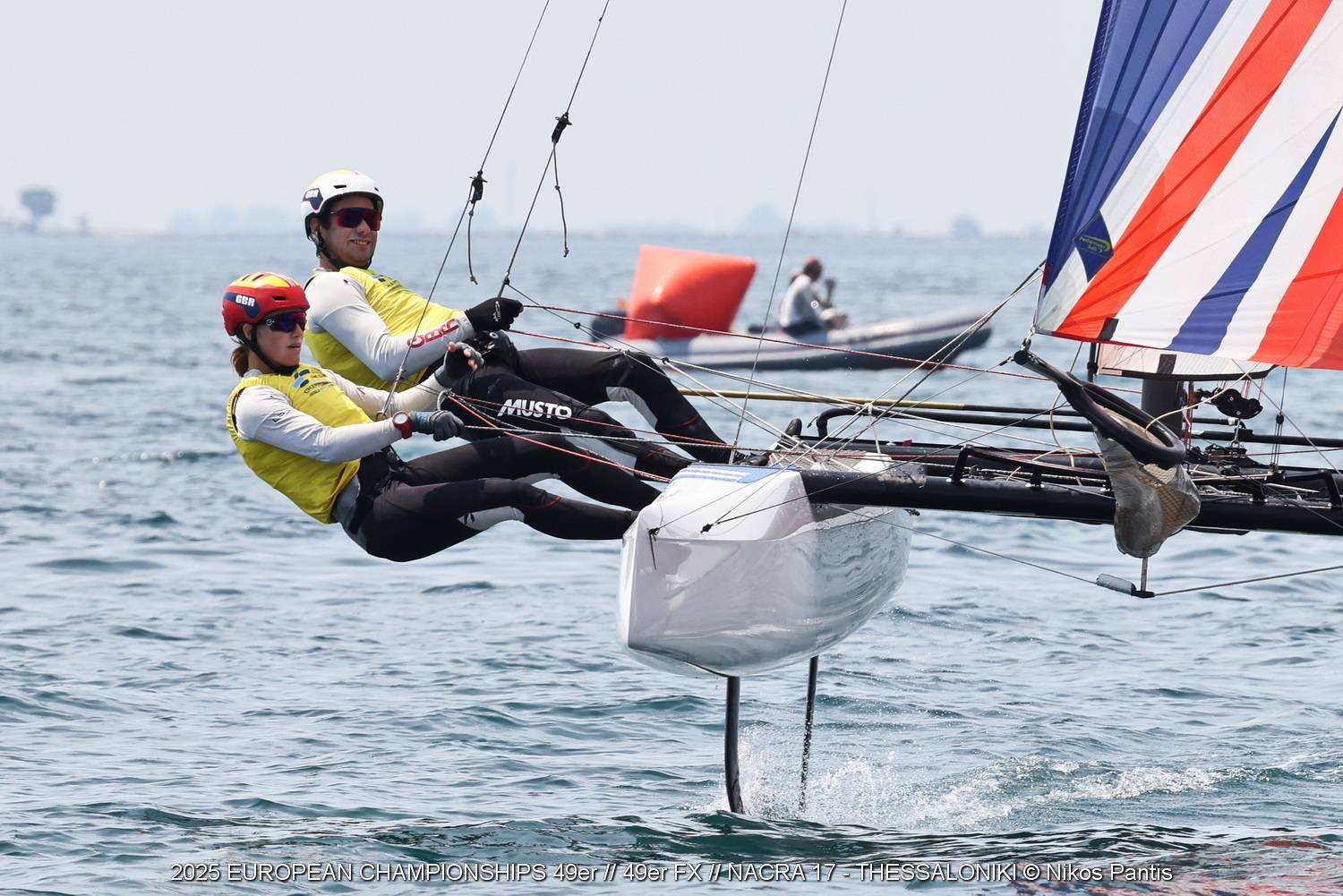
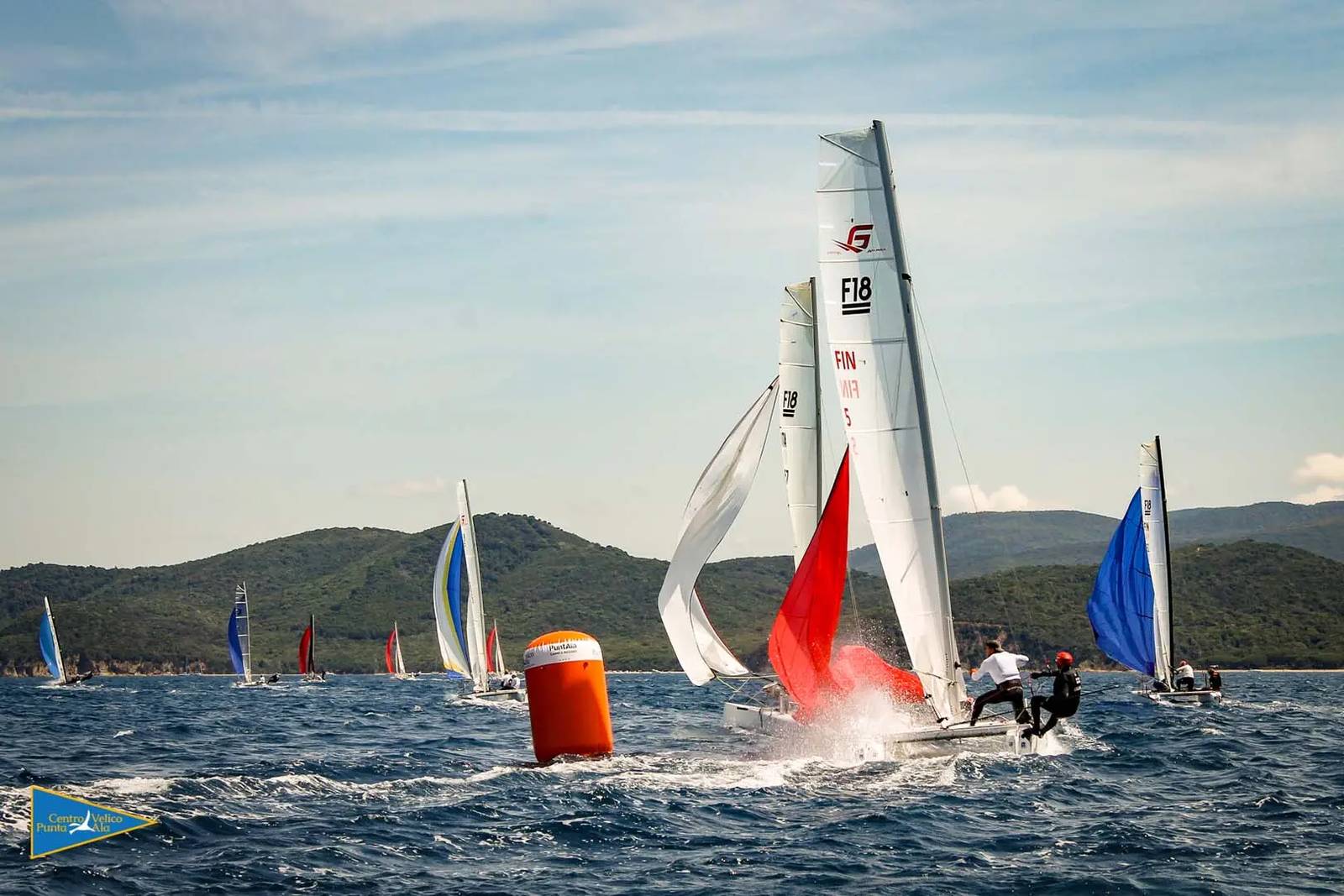
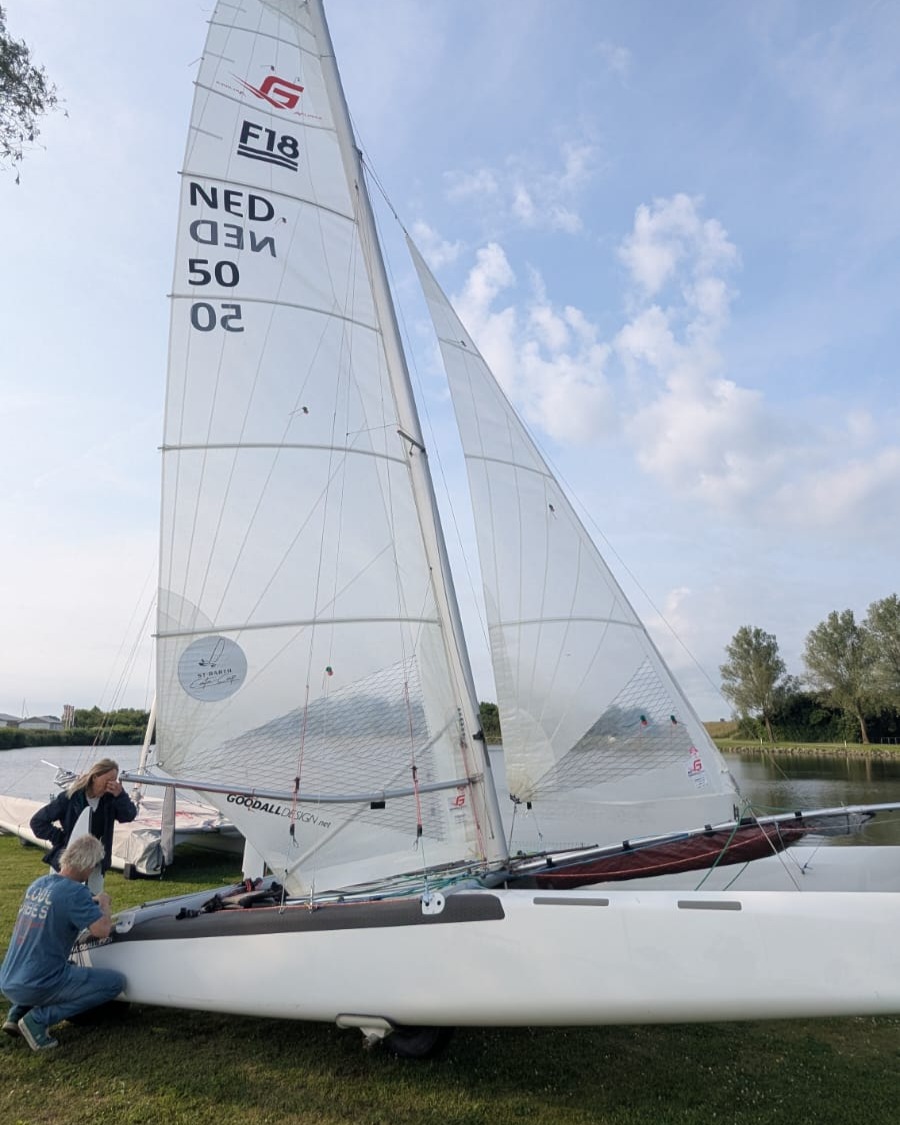
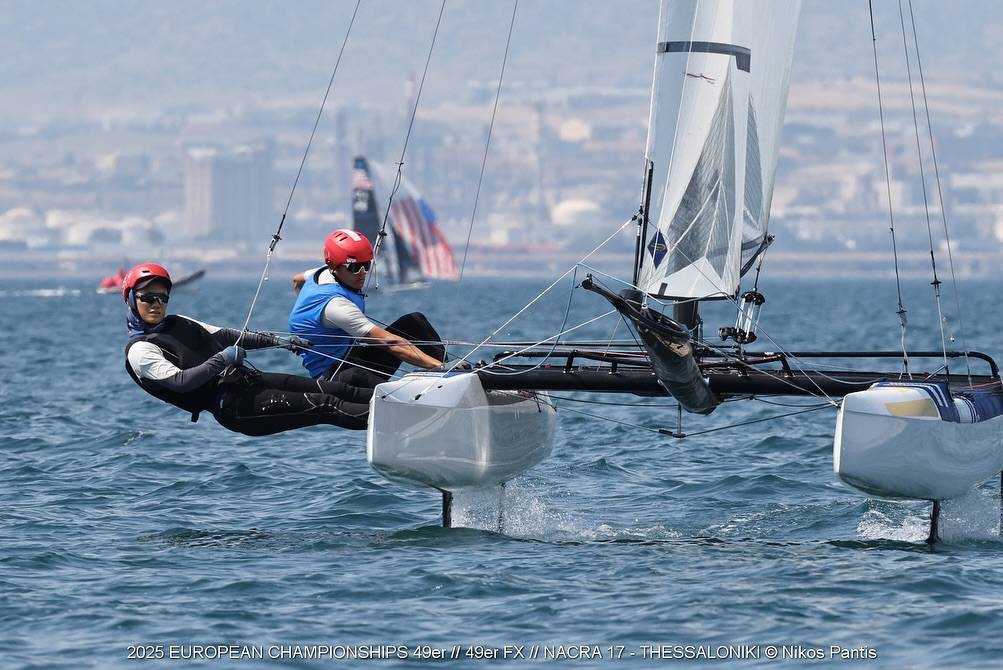



















Teo di Battista , 3° of Classic using Exploder Ad3 2016 version instead Scheurer .
I just heard that my great sailing friend and former CEO of Hobiecat Europe has passed. May The endless oceans…
...Report was sent by an F18 Sailor, if you want Hobies reported send your own, we'll publish as usual. Cheers.
Looks like in your report the Hobies are not really present. Suggest to rewrite the article.
Thanks for the great report Wik. Great battle.